Abstract
Volvariella volvacea, commonly known as the straw or paddy mushroom, had the following growth characteristics: minimum temperature, 25°C; optimal temperature, 37°C; maximal temperature, 40°C; pH optimum 6.0. Optimal pH for cellulase production was 5.5. The optimal initial pH for cellulase production and mycelial growth was found to be 6.0. The pH and temperature optima for cellulolytic activity were 5.0 and 50°C, respectively. Maximal cellulolytic activity was obtained within 5 days in shake-flask culture. The cellulases were found to be partly cell free and partly cell bound during growth on microcrystalline cellulose. The endoglucanase activity was primarily extracellular, and β-glucosidase activity was found exclusively extracellularly. Weak cellulase activity was detected when cells were grown on cellobiose and lactose. V. volvacea could not digest the lignin portion of newspaper in shake-flask cultivation. Phenol oxidase, an important enzyme in lignin biodegradation, also was lacking in the cell-free filtrate. However, the organism oxidized phenolic compounds when it was cultured on agar plates containing commercial lignin.
Full text
PDF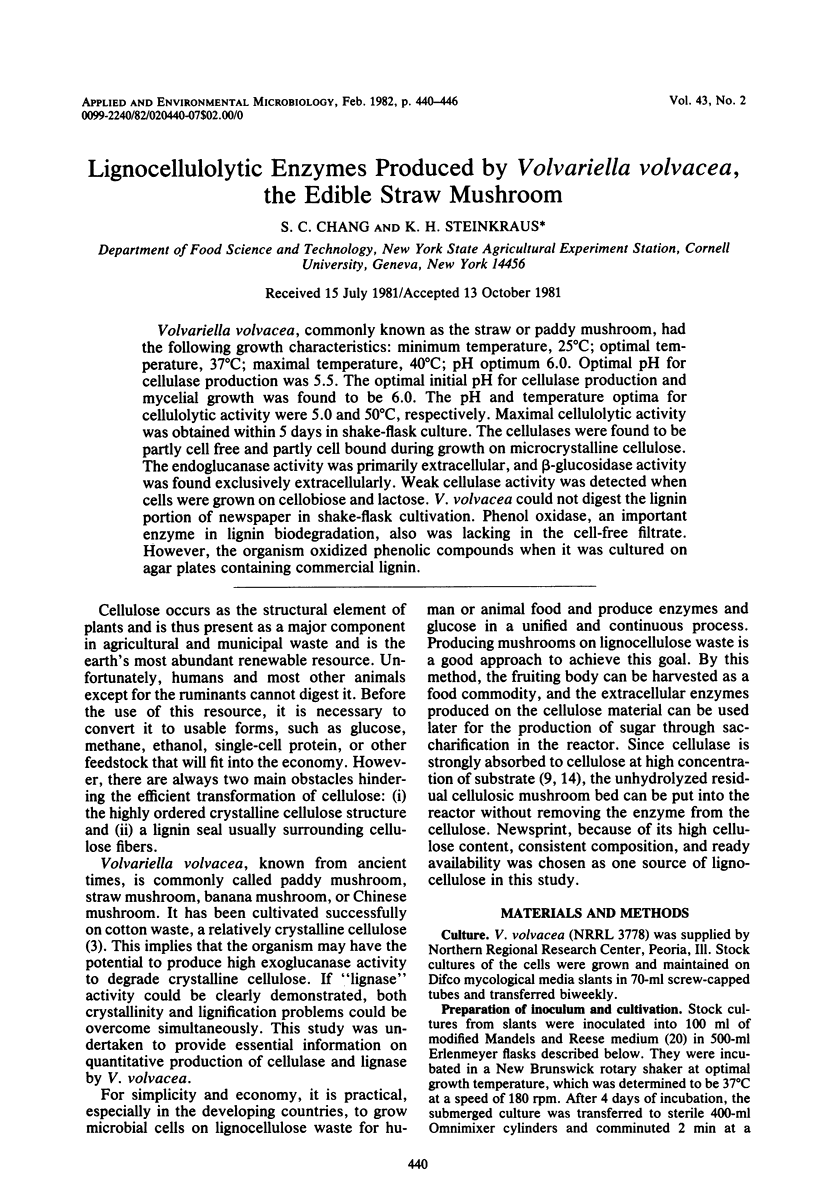
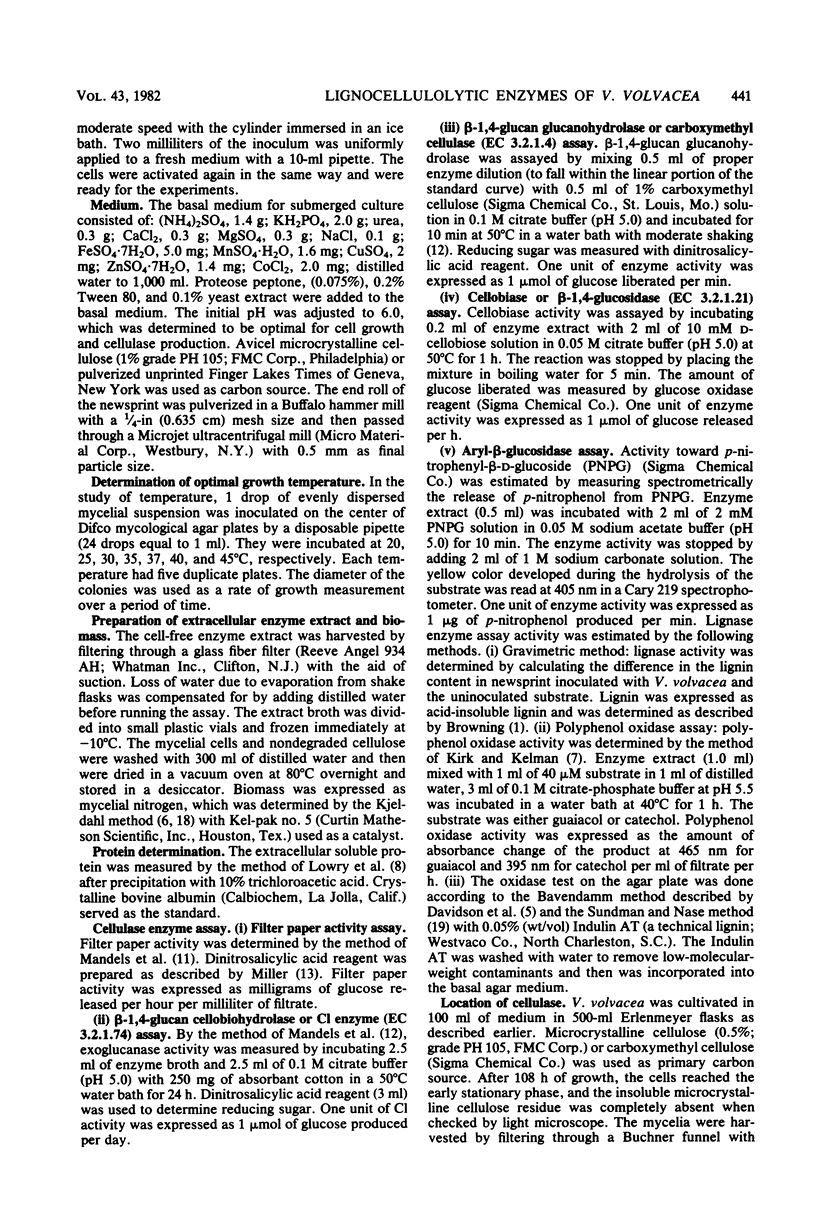
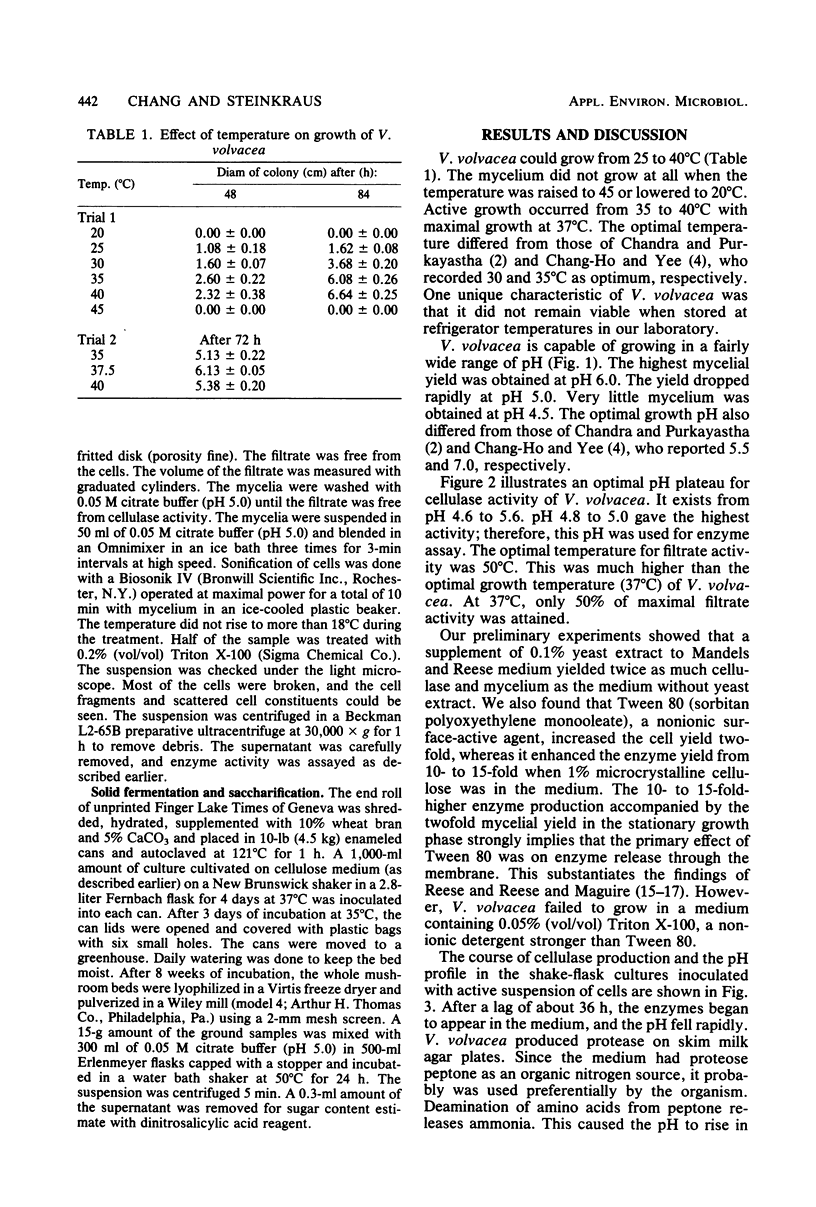
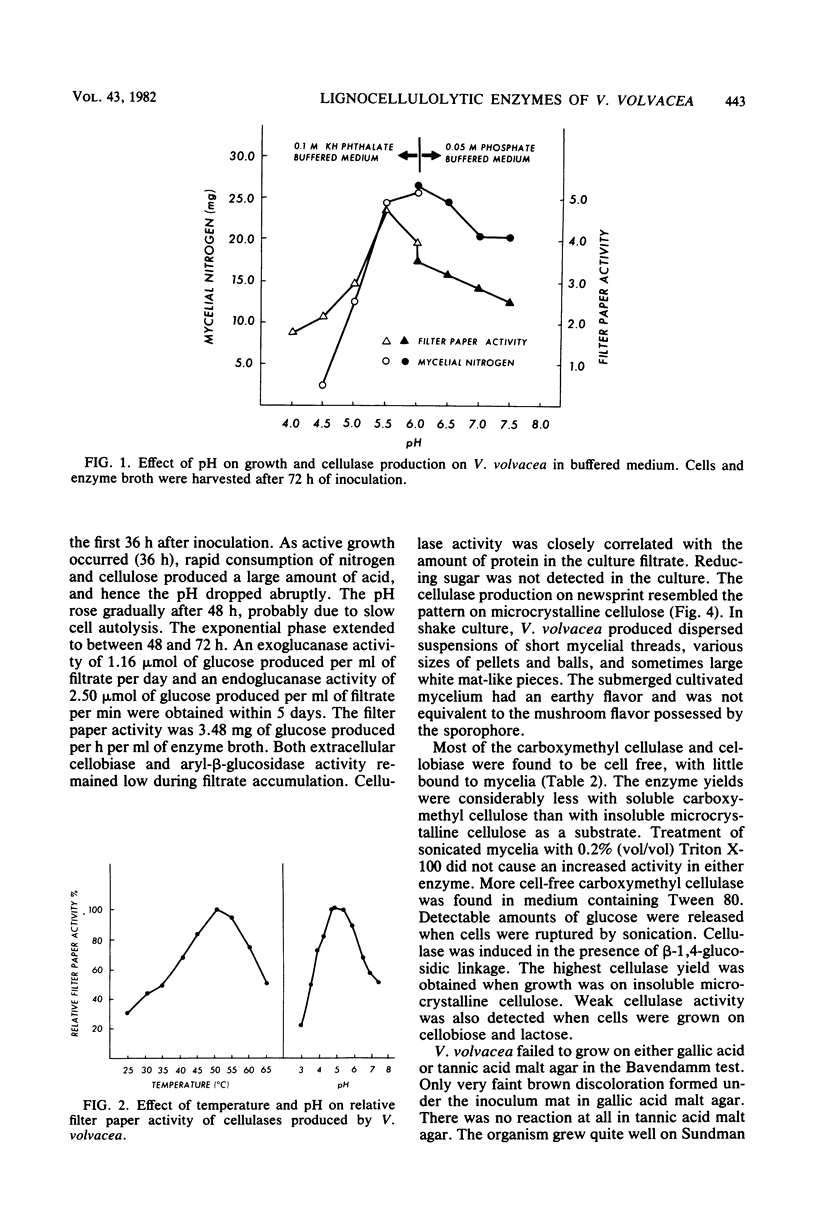
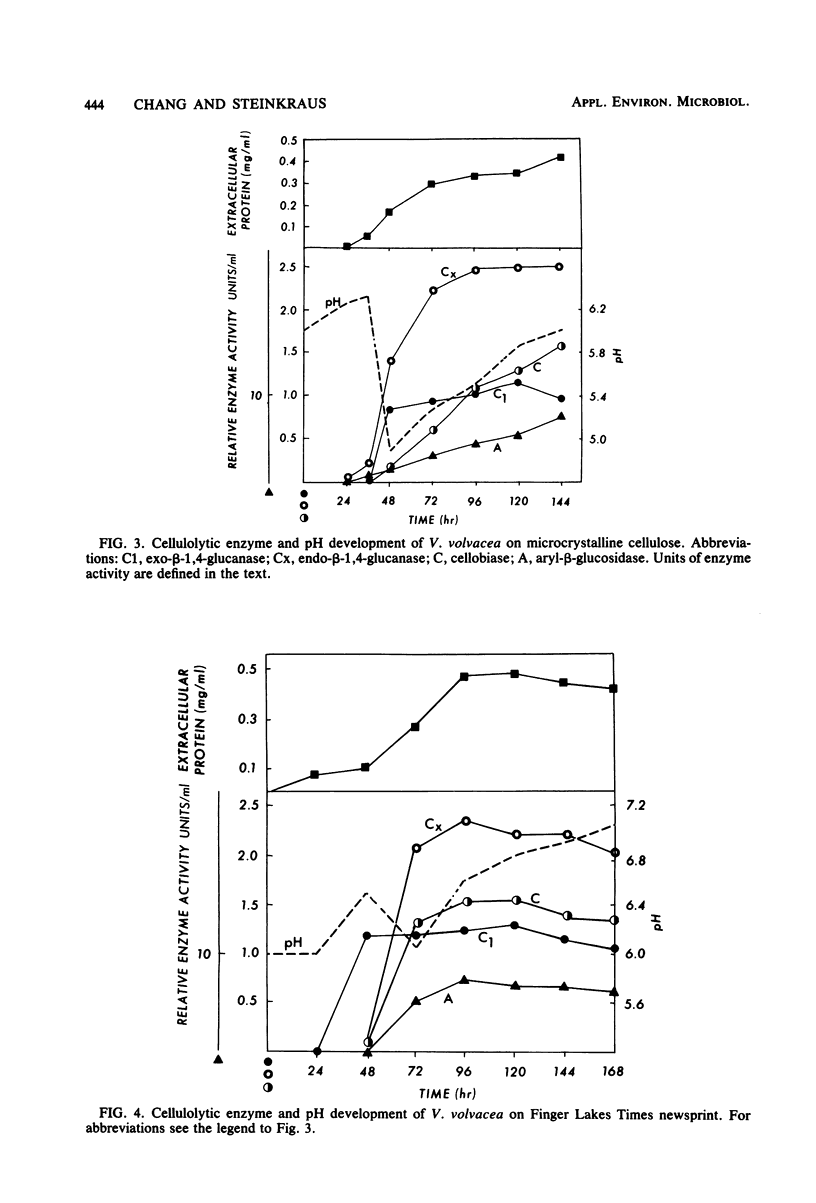
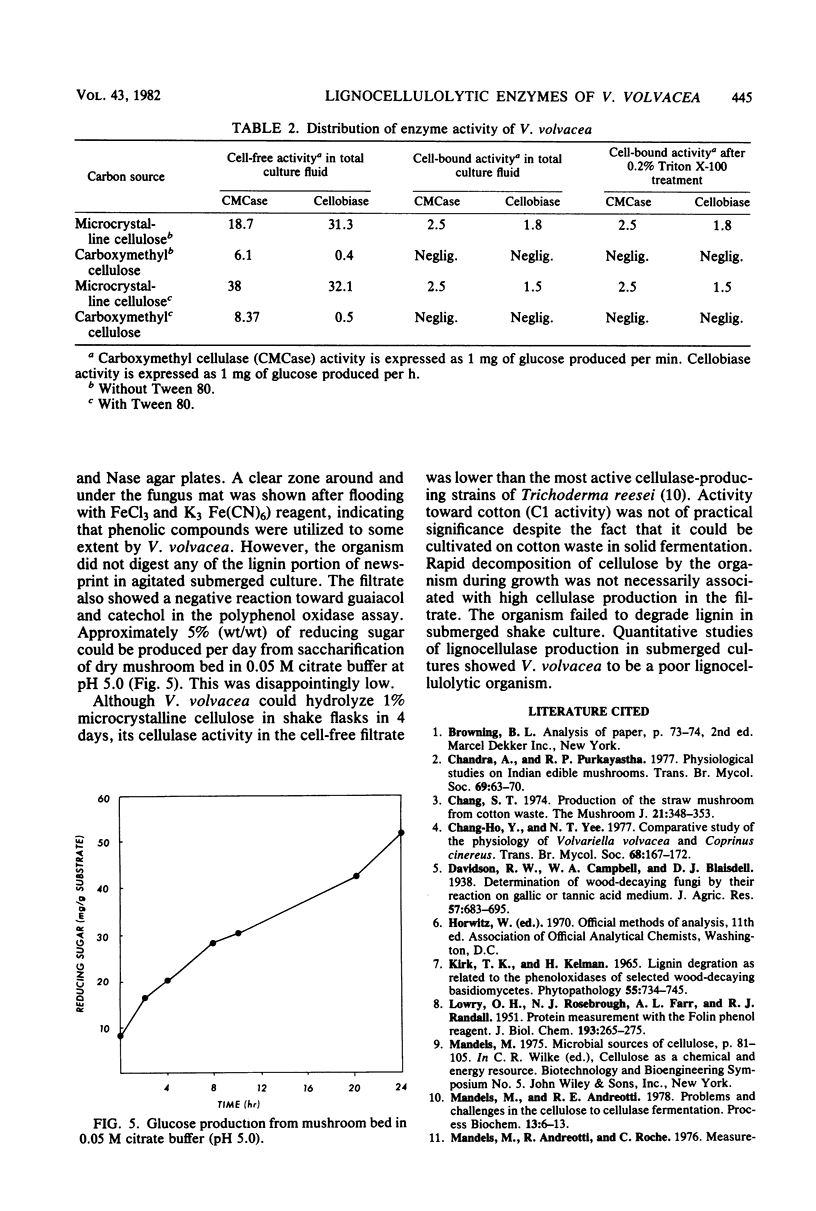
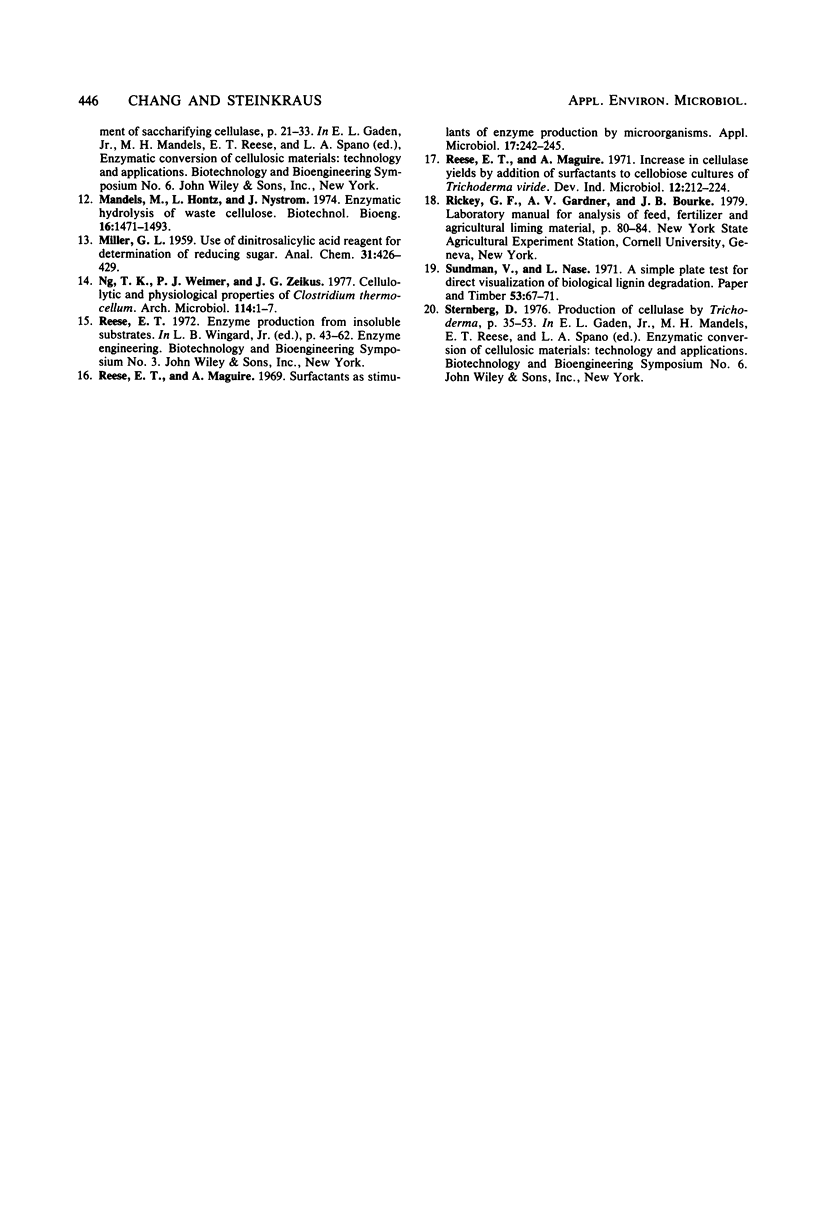
Selected References
These references are in PubMed. This may not be the complete list of references from this article.
- LOWRY O. H., ROSEBROUGH N. J., FARR A. L., RANDALL R. J. Protein measurement with the Folin phenol reagent. J Biol Chem. 1951 Nov;193(1):265–275. [PubMed] [Google Scholar]
- Ng T. K., Weimer T. K., Zeikus J. G. Cellulolytic and physiological properties of Clostridium thermocellum. Arch Microbiol. 1977 Jul 26;114(1):1–7. doi: 10.1007/BF00429622. [DOI] [PubMed] [Google Scholar]
- Reese E. T., Maguire A. Surfactants as stimulants of enzyme production by microorganisms. Appl Microbiol. 1969 Feb;17(2):242–245. doi: 10.1128/am.17.2.242-245.1969. [DOI] [PMC free article] [PubMed] [Google Scholar]
- Sternberg D. Production of cellulase by Trichoderma. Biotechnol Bioeng Symp. 1976;(6):35–53. [PubMed] [Google Scholar]


